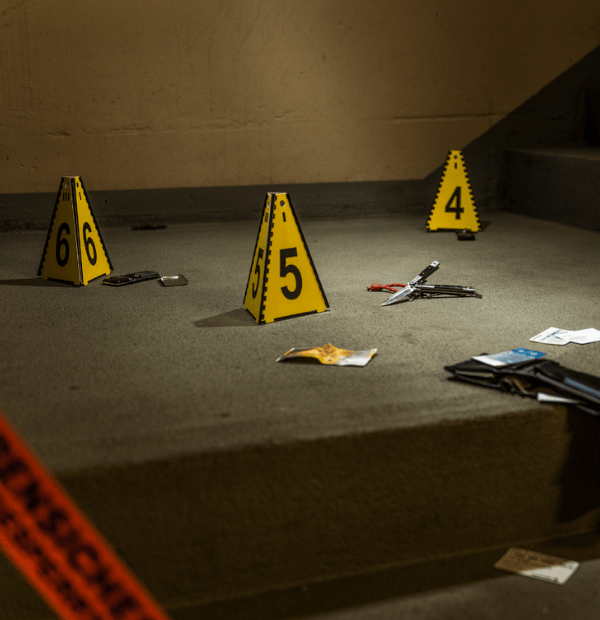过失杀人

Understanding Manslaughter Charges in Australia
Manslaughter is a serious offence under section 18(1)(b) of the Crimes Act 1900 (NSW) but is considered less morally culpable than murder due to the absence of deliberate intent to kill. It generally applies when a person causes the death of another through criminal negligence, an unlawful and dangerous act, excessive self-defence, or a failure to act.
- Manslaughter is governed under section 18 of the Crimes Act 1900 (NSW) and similar provisions in other states and territories, including the Criminal Code 2002 (ACT).
- The offence is used where death is caused unintentionally or in circumstances where murder cannot be proven beyond reasonable doubt.
- While the maximum penalty is severe (up to 25 years imprisonment), sentences can vary significantly depending on the facts.
If you are charged with manslaughter, contact Brightstone Defence Criminal Lawyers for experienced and strategic legal representation.
Manslaughter is defined as unlawful killing without the intent to kill or cause grievous bodily harm. In New South Wales, it is dealt with under section 18 of the Crimes Act 1900 (NSW), and in the ACT under section 15 of the Criminal Code 2002. The offence differs from murder because it does not require the prosecution to prove that the accused intended to kill the victim.
There are four main categories of manslaughter:
- Criminal negligence
- Unlawful and dangerous acts
- Excessive self-defence
- Omissions (failing to act when a duty of care exists)
Manslaughter is subsequently broadly categorised into two types:
1. Voluntary Manslaughter
Occurs when a person intends to kill or cause serious harm but has a partial defence to murder such as provocation, substantial impairment due to mental health, or excessive self-defence. These defence reduce what would otherwise be murder to manslaughter.
2. Involuntary Manslaughter
Occurs when a person does not intend to kill, but their actions are so careless, unlawful, or dangerous that they result in another person’s death. This includes:
- Manslaughter by criminal negligence – such as failing to provide medical care to a dependent
- Manslaughter by unlawful and dangerous act – such as a violent assault that unintentionally causes fatal injuries
检方必须证明的要素
To secure a conviction for manslaughter, the prosecution must prove, beyond reasonable doubt, at least one of the following:
1. Criminal Negligence
- The accused owed the deceased a legal duty of care.
- The accused breached that duty through conduct that fell far below the standard expected of a reasonable person.
- The breach of duty caused the death of the victim.
- The negligence was so gross as to warrant criminal punishment.
2. Unlawful and Dangerous Act
- The accused committed an act that was both unlawful and dangerous.
- A reasonable person in the same position would have recognised the act posed a serious risk of harm.
- The act directly caused the victim’s death.
3. Excessive Self-Defence
- The accused believed they were acting in self-defence but used more force than was reasonably necessary in the circumstances.
- The force used was disproportionate, resulting in death.
4. Omission to Act (Duty of Care)
- The accused had a legal duty to act (e.g. parent to child, caregiver to vulnerable adult).
- They failed to act in a way a reasonable person would.
- The failure to act caused the death.
可能的防御
A skilled criminal defence lawyer may raise one or more of the following defence, depending on the facts of your case:
- Self-defence (if it can be proven that the use of force was reasonable)
- Duress (if you were forced to act under threat)
- Necessity (if you acted to prevent a greater harm)
- Automatism (if the act was involuntary due to a medical or mental condition)
- Mental illness (under the Mental Health Act)
Each defence requires specific legal arguments and may lead to an acquittal or reduction in charges.
潜在的处罚
Manslaughter carries serious penalties across Australia.
- The maximum penalty is 25 years imprisonment in NSW and the ACT.
- However, average sentences vary and are significantly influenced by the circumstances of the offence.
- In many cases, manslaughter convictions result in prison terms of 5 to 10 years, with an average non-parole period of around 4.5 years.
Sentencing factors include the nature of the act, level of negligence or recklessness, remorse shown, and any prior criminal history.

法律程序
& 选项
Manslaughter is a highly complex area of criminal law involving nuanced legal definitions, forensic evidence, and subjective assessments of intent, negligence, and causation. If you are facing a manslaughter charge, you should seek immediate advice from an experienced criminal defence lawyer. The outcome of your case may depend on technical legal arguments and thorough case preparation.
恳求
无罪
If you plead not guilty, Brightstone Defence will carefully assess the circumstances and build a strong defence strategy. This may involve:
- Arguing lack of intent or foresight required to prove manslaughter
- Challenging the prosecution’s version of events
- Presenting expert evidence to support your defence
- Identifying weaknesses or inconsistencies in the prosecution’s case
Our experienced criminal lawyers will represent you through every stage, from case preparation to trial, ensuring that your rights are protected and that the best possible outcome is pursued.
恳求
有罪
If you choose to plead guilty to manslaughter, your matter will proceed directly to sentencing. An early guilty plea may:
- Demonstrate remorse and take responsibility for your actions
- Reduce the severity of the sentence imposed by the court
- Help avoid a lengthy and complex trial
However, manslaughter is a serious offence that carries significant penalties, including lengthy imprisonment. You should obtain legal advice before deciding how to plead, to fully understand the consequences and available options.
- 谋杀涉及故意或轻率杀人
- 过失杀人涉及缺乏意图,但由于:
- 刑事疑忽
- 非法和危险行为
- 过度的自卫或挑衅
这意味着该人知道他们的行为可能导致死亡,但还是继续前进。
例如,在有人居住的房屋放火或知道可能致命的情况下暴力打人。
终身监禁意味着一个人可以在监狱中被关押剩余的自然生命,尽管法院可以设定不得假释期(释放资格之前的最短时间)。
在罕见或极端情况下,法院可能实施“生命意味着生命”的判决,没有假释。
- 是的,如果他们:
- 鼓励、指导或帮助了杀手(共犯或联合犯罪企业)
- 参与了导致可预见杀人的犯罪
- 下命令或计划了杀人
这适用于在犯严重罪行(例如,抢劫、攻击、纵火)时造成死亡,即使没有杀人意图。
由于危险背景,它被视为谋杀。
- 是的,如果一个人:
- 真诚地相信他们需要保护自己或他人,并且
- 使用的武力是合理的
如果自卫是过度的,可能将谋杀减轻为过失杀人。
家属可以获得:
- 新南威尔士州受害人服务(或州等效服务)
- 葬礼和咨询支持
- 在判决期间的受害人影响陈述
- 通过矫正服务获取信息
12人陪审团根据法庭上提供的证据决定被告是有罪还是无罪。
法官监督审判,如果有定罪,则实施判决。
- 是的
面对谋杀指控非常严重,需要立即的法律代表。经验丰富的刑事辩护律师可以保护您的权利、审查证据,并制定一个强有力的辩护策略,专门针对您的案件。
在Brightstone Defence,我们的专家刑事律师提供整个法律程序的战略指导。我们评估情况、确定可能的辩护,并努力实现最佳结果。今天联系我们进行机密咨询和专业代表。
- 谋杀涉及杀人或造成严重伤害的意图。
- 过失杀人涉及:
- 没有意图,但仍然有非法行为或疑忽导致死亡。
- 它被认为道德上的责任较小,不同于谋杀。
根据澳大利亚法律,有两种主要类型:
- 自愿过失杀人–存在意图,但由于减轻情况(例如挑衅或过度自卫),罪行从谋杀降级。
- 非自愿过失杀人–死亡是由以下原因造成的:
- 一项非法和危险的行为,或
- 严重疑忽(例如,照料义务被违反,带来严重后果)。
- 这发生在一个人:
- 进行了一项非法行为,并且
- 该行为是危险的,并且
- 它导致了某人的死亡(即使死亡不是有意的)。
- 这适用于某人对照料义务(例如,父母、护理人或专业人士),并且:
- 未能采取合理措施保护一个人,并且
- 该失败导致死亡。
- 是的。例如:
- 与DV相关的攻击无意中造成死亡(例如,推人造成的头部伤害)
- 在暴力事件后未能寻求医疗帮助
- 导致伴侣或儿童死亡的极端疑忽或虐待
这些案件可能被指控为过失杀人而不是谋杀,具体取决于意图和情况。
- 是的,在某些情况下。例如:
- 如果一个人对照料义务并且他们的失败导致死亡(例如,疑忽、疑漏)
- 如果他们参与了导致其他人无意中死亡的非法行为
- 是的
如果一个人采取行动保护自己或他人,并使用了合理的武力,这可能是对指控的完全辩护。
然而,过度的自卫可能将谋杀指控减轻为过失杀人。
- 是的
检察官或陪审团可能决定证据不支持谋杀所需的意图,而是进行或返回过失杀人定罪。
这可以在辞诉谈判或审判期间发生。
- 谋杀涉及杀人或造成严重伤害的意图。
- 过失杀人涉及:
- 没有意图,但仍然有非法行为或疑忽导致死亡。
- 它被认为道德上的责任较小,不同于谋杀。
根据澳大利亚法律,有两种主要类型:
- 自愿过失杀人–存在意图,但由于减轻情况(例如挑衅或过度自卫),罪行从谋杀降级。
- 非自愿过失杀人–死亡是由以下原因造成的:
- 一项非法和危险的行为,或
- 严重疑忽(例如,照料义务被违反,带来严重后果)。
- 这发生在一个人:
- 进行了一项非法行为,并且
- 该行为是危险的,并且
- 它导致了某人的死亡(即使死亡不是有意的)。
- 这适用于某人对照料义务(例如,父母、护理人或专业人士),并且:
- 未能采取合理措施保护一个人,并且
- 该失败导致死亡。
- 是的。例如:
- 与DV相关的攻击无意中造成死亡(例如,推人造成的头部伤害)
- 在暴力事件后未能寻求医疗帮助
- 导致伴侣或儿童死亡的极端疑忽或虐待
这些案件可能被指控为过失杀人而不是谋杀,具体取决于意图和情况。
- 是的,在某些情况下。例如:
- 如果一个人对照料义务并且他们的失败导致死亡(例如,疑忽、疑漏)
- 如果他们参与了导致其他人无意中死亡的非法行为
- 是的
如果一个人采取行动保护自己或他人,并使用了合理的武力,这可能是对指控的完全辩护。
然而,过度的自卫可能将谋杀指控减轻为过失杀人。
- 是的
检察官或陪审团可能决定证据不支持谋杀所需的意图,而是进行或返回过失杀人定罪。
这可以在辞诉谈判或审判期间发生。
成功案例和文章
Brightstone Defence全年提供有针对性的刑事辩护服务,并建立了良好的成功记录。
认识我们的律师
世界一流
代表
100 多条 5 星评价
为每个案例量身定制的个性化法律策略
刑事辩护法领域公认的领导者
免费初步咨询和案例评估
在高风险和复杂的案件中证明是成功的
即时获取预估报价
和免费咨询会议
面临刑事指控?我们经验丰富的辩护律师随时为您提供帮助。立即预订免费咨询,讨论您的案例并了解您的选择。






